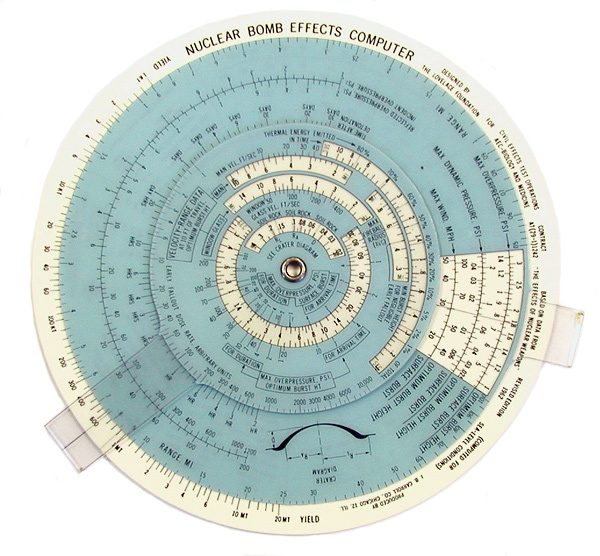Things tagged science:
Watching the Swiss: A network approach to rural and exurban public transport
Tim Petersen in Transport Policy:
Public transport in rural and exurban areas faces major challenges, with low population densities making it difficult to provide high-quality, high-occupancy services. While demand-responsive transport is sometimes prescribed as an innovative strategy for service provision, the network planning approach to public transport suggests that integrated timed-transfer or pulse timetable networks should be explored first. This paper examines the rural network approach using examples from Switzerland, which has among the highest rates of public transport use in Western Europe, as well as nationally-coordinated Taktfahrplan scheduling that extends deep into rural areas. The basic Swiss pulse timetabling technique is reviewed, along with the application of the approach to a remote rural case study in Graubünden’s Lower Engadine and Val Müstair.
Human Images From World’s 1st Total-Body Scanner Unveiled
Explorer, the world’s first medical imaging scanner that can capture a 3D picture of the whole human body at once, has produced its first scans.
Movie tracing the delivery and distribution of a radiolabeled sugar (fluorodeoxyglucose) following injection into a leg vein. In the first few seconds following injection it travels to the heart from where it is distributed through the arteries to all the organs of the body. At around 3 minutes, some of the substance is excreted from the kidneys into the bladder. Gradual accumulation of the glucose can be seen in the heart, brain and liver over time. The EXPLORER scanner will allow the delivery, metabolism and excretion of many substances and drugs to be followed in the entire human body in a similar manner.
What if the Placebo Effect Isn’t a Trick?
Gary Greenberg at The New York Times (Use archive link to bypass paywall):
Two dozen of the leading lights of placebo science spent a preconference day agonizing over their reputation — as purveyors of sham medicine who prey on the desperate and, if they are lucky, fool people into feeling better — and strategizing about how to improve it. It’s an urgent subject for them, and only in part because, like all apostate professionals, they crave mainstream acceptance. More important, they are motivated by a conviction that the placebo is a powerful medical treatment that is ignored by doctors only at their patients’ expense.
And after a quarter-century of hard work, they have abundant evidence to prove it. Give people a sugar pill, they have shown, and those patients — especially if they have one of the chronic, stress-related conditions that register the strongest placebo effects and if the treatment is delivered by someone in whom they have confidence — will improve.
Kinematics of the Interstellar Vagabond 1I/'Oumuamua
When the velocity is compared to the local stars, ‘Oumuamua can be ruled out as co-moving with any of the dozen nearest systems, i.e. it does not appear to be associated with any local exo-Oort clouds (most notably that of the Alpha Centauri triple system). ‘Oumuamua’s velocity is within 5 km/s of the median Galactic velocity of the stars in the solar neighborhood (<25 pc), and within 2 km/s of the mean velocity of the local M dwarfs. Its velocity appears to be statistically “too” typical for a body whose velocity was drawn from the Galactic velocity distribution of the local stars (i.e. less than 1 in 500 field stars in the solar neighborhood would have a velocity so close to the median UVW velocity). In the Local Standard of Rest frame (circular Galactic motion), ‘Oumuamua is remarkable for showing both negligible radial (U) and vertical (W) motion, while having a slightly sub-Keplerian circular velocity (V; by ~11 km/s). These calculations strengthen the interpretation that A/2017 U1 has a distant extrasolar origin, but not among the very nearest stars. Any formation mechanism for this interstellar asteroid should account for the coincidence of ‘Oumuamua’s velocity being so close to the LSR.
Via Centauri Dreams via MR
Computational Courtship
Rachel Dinh, Patrick Gildersleve, Chris Blex, Taha Yasseri:
Have we become more tolerant of dating people of different social backgrounds compared to ten years ago? Has the rise of online dating exacerbated or alleviated gender inequalities in modern courtship? Are the most attractive people on these platforms necessarily the most successful? In this work, we examine the mate preferences and communication patterns of male and female users of the online dating site eHarmony over the past decade to identify how attitudes and behaviors have changed over this time period.
Life Versus Dark Energy
The presence of dark energy in our universe is causing space to expand at an accelerating rate. As a result, over the next approximately 100 billion years, all stars residing beyond the Local Group will fall beyond the cosmic horizon and become not only unobservable, but entirely inaccessible, thus limiting how much energy could one day be extracted from them. Here, we consider the likely response of a highly advanced civilization to this situation. In particular, we argue that in order to maximize its access to useable energy, a sufficiently advanced civilization would chose to expand rapidly outward, build Dyson Spheres or similar structures around encountered stars, and use the energy that is harnessed to accelerate those stars away from the approaching horizon and toward the center of the civilization.
Brain and behavioral lateralization in invertebrates
Elisa Frasnelli in Frontiers in Psychology:
Traditionally, only humans were thought to exhibit brain and behavioral asymmetries, but several studies have revealed that most vertebrates are also lateralized. Recently, evidence of left–right asymmetries in invertebrates has begun to emerge, suggesting that lateralization of the nervous system may be a feature of simpler brains as well as more complex ones. Here I present some examples in invertebrates of sensory and motor asymmetries, as well as asymmetries in the nervous system. I illustrate two cases where an asymmetric brain is crucial for the development of some cognitive abilities.
Via reddit.
Hotter years 'mean lower exam results'
Sean Coughlan at the BBC:
Students taking exams in a summer heat wave might have always complained that they were hampered by the sweltering weather.
But this study, from academics at Harvard, the University of California Los Angeles (UCLA) and Georgia State University, claims to have produced the first clear evidence showing that when temperatures go up, school performance goes down.
The enduring link between demography and inflation
Mikael Juselius and Előd Takáts in BIS:
Our paper is the first to look at the potential link between the population’s age structure and inflation, taking a very long-term view. Our data go back to 1870 and cover 22 countries. We find a strong relationship that potentially calls into question conventional monetary theories.
Biases in electronic health record data due to processes within the healthcare system
G M Weber et al. in the BMJ:
In this study, we build on previous research into the healthcare process model, but on a larger scale. Specifically, we systematically evaluate the ability of 272 laboratory tests to predict three year survival across the full patient populations seen over a year at two large hospitals. We treat laboratory test data in the EHR as having two distinct dimensions. One dimension is the value of the test result, which is a measure of the patient’s pathophysiology. The other is the timing of when the test was ordered, which is a marker of the underlying healthcare processes.
Boils down to doctors have a pretty good sense of who is in trouble, and change behaviors therefore. But that is not the point, the point is that when you are extracting info from big data, the noise may have signal, that you have to control for if you want to look deeper.
The Unexpected Effects of the Oklahoma City Bombing
Peter Feuerherd at JSTOR Daily:
How do people respond to shared trauma? Studies of the aftermath of the Oklahoma City bombing of April 19th, 1995, indicate that the traumatic event resulted in people seeking to strengthen their bonds with loved ones: Divorce rates went down, and birth rates went up.
Via MR
The Silurian Hypothesis
Gavin A. Schmidt and Adam Frank with a corker of a paper:
If an industrial civilization had existed on Earth many millions of years prior to our own era, what traces would it have left and would they be detectable today? We summarize the likely geological fingerprint of the Anthropocene, and demonstrate that while clear, it will not differ greatly in many respects from other known events in the geological record. We then propose tests that could plausibly distinguish an industrial cause from an otherwise naturally occurring climate event.
Looking to Listen: Audio-Visual Speech Separation
Inbar Mosseri and Oran Lang at Google Research:
People are remarkably good at focusing their attention on a particular person in a noisy environment, mentally “muting” all other voices and sounds. Known as the cocktail party effect, this capability comes natural to us humans. However, automatic speech separation — separating an audio signal into its individual speech sources — while a well-studied problem, remains a significant challenge for computers.
In “Looking to Listen at the Cocktail Party”, to appear in SIGGRAPH 2018 this summer, we present a deep learning audio-visual model for isolating a single speech signal from a mixture of sounds such as other voices and background noise. In this work, we are able to computationally produce videos in which speech of specific people is enhanced while all other sounds are suppressed. Our method works on ordinary videos with a single audio track, and all that is required from the user is to select the face of the person in the video they want to hear, or to have such a person be selected algorithmically based on context. We believe this capability can have a wide range of applications, from speech enhancement and recognition in videos, through video conferencing, to improved hearing aids, especially in situations where there are multiple people speaking.
Yeah whatever, a bunch of mumbo jumbo right? Well just watch this:
How Can Cells Divide When DNA Looks Like Spaghetti?
Biophilia explains:
Topoisomerases untangle the mess, very carefully, with itty-bitty molecular scissors.
Why Earth's History Appears So Miraculous
Fairly psychedelic musings on The Great Filter by Peter Brannen in The Atlantic:
It was hard times for the bomber pilots that floated over Europe, their planes incinerating cities below, like birds of prey. Even as they turned the once-bustling streets beneath to howling firestorms, death had become a close companion to the crews of the Allied bombers as well. In fact, surviving a tour with the Bomber Command had become a virtual coin flip. While their munitions fell mutely from bomb bays, an upward sleet of fire from smoldering city grids and darkened farmland shot the planes out of the sky like clay pigeons. For recruits encountering the freshly empty bunk beds of dead airmen, morale was sapped before they could even get in the cockpit. Hoping to slow this attrition, Allied officers studied the pattern of bullet holes in returning aircraft for vulnerable parts to reinforce with armor.
It was natural to think that the bombers needed more armor where (it appeared) they were taking the most bullets. But the Hungarian-born mathematician Abraham Wald, and his colleagues at the Statistical Research Group at Columbia University, had a novel, if counterintuitive, prescription. Don’t protect the planes where they were taking the most damage, Wald said. Armor the planes where there were no bullet holes at all.
“You put armor where there are no holes, because the planes that got shot there didn’t return to the home base,” says Anders Sandberg, a senior research fellow at University of Oxford’s Future of Humanity Institute. “They crashed.”
The holes didn’t show where returning planes were likely to get hit, but only what it was possible for later observers to see. This is known as an observer selection effect, and the same sort of bias might apply not only to perforated planes, but to whole worlds as well.
What if, when we looked at our own planet’s past, we saw a similar pattern? After all, there are 100-mile impact craters on our planet’s surface from the past billion years, but no 600-mile craters. But of course, there couldn’t be scars this big. On worlds where such craters exist, there is no one around afterward to ponder them. In a strange way, truly gigantic craters don’t appear on the planet’s surface because we’re here to look for them. Just as the wounds of the returning planes could reflect only the merely survivable, so too for our entire planet’s history. It could be that we’ve been shielded from these existential threats by our very existence.
“Observer selection effects are really the kind of effects where the data you get is going to be dependent, in some sense, on survival, or that you as an observer exist,” Sandberg says. “Now this gets really interesting and scary when we apply it to our own survival.”
Want Cleaner Air? Try Using Less Deodorant
Kendra Pierre-Louis and Hiroko Tabuchi in The New York Times:
Researchers found that petroleum-based chemicals used in perfumes, paints and other consumer products can, taken together, emit as much air pollution in the form of volatile organic compounds, or V.O.C.s, as motor vehicles do.
The V.O.C.s interact with other particles in the air to create the building blocks of smog, namely ozone, which can trigger asthma and permanently scar the lungs, and another type of pollution known as PM2.5, fine particles that are linked to heart attacks, strokes and lung cancer.
Finding X in Espresso: Adventures in Computational Lexicology
Vitaliy Kaurov at Wolfram:
When Does a Word Become a Word? “A shot of expresso, please.” “You mean ‘espresso,’ don’t you?” A baffled customer, a smug barista—media is abuzz with one version or another of this story. But the real question is not whether “expresso” is a correct spelling, but rather how spellings evolve and enter dictionaries. Lexicographers do not directly decide that; the data does. Long and frequent usage may qualify a word for endorsement. Moreover, I believe the emergent proliferation of computational approaches can help to form an even deeper insight into the language. The tale of expresso is a thriller from a computational perspective.
Adventures in Computational Lexicology indeed.



